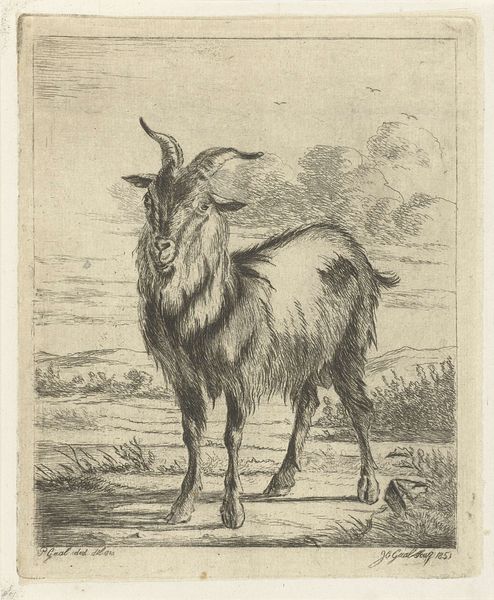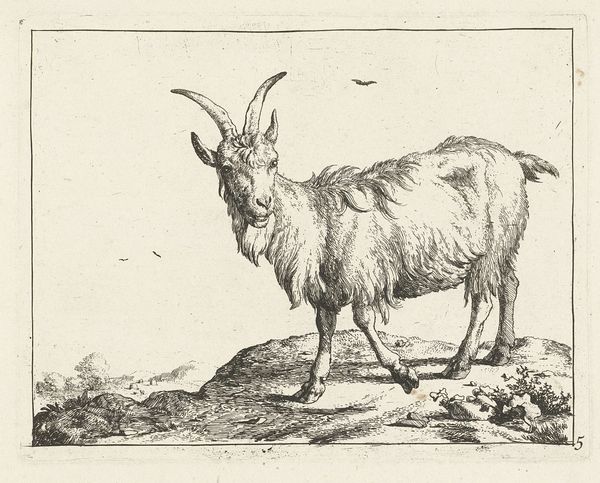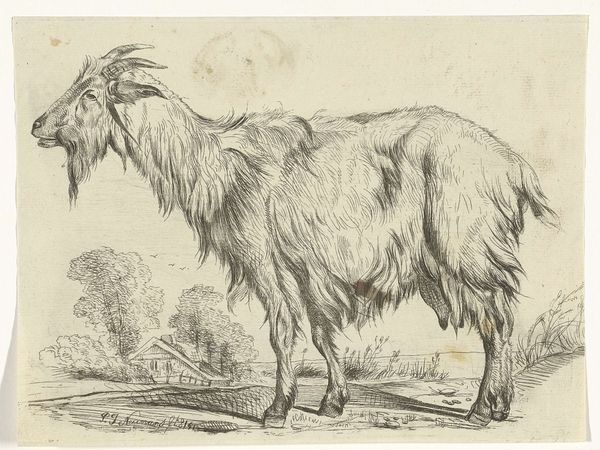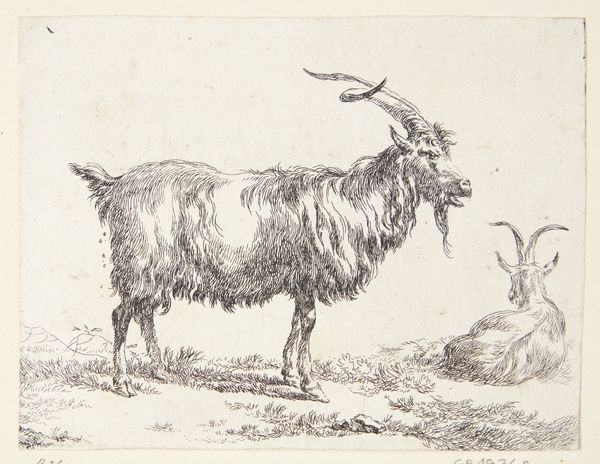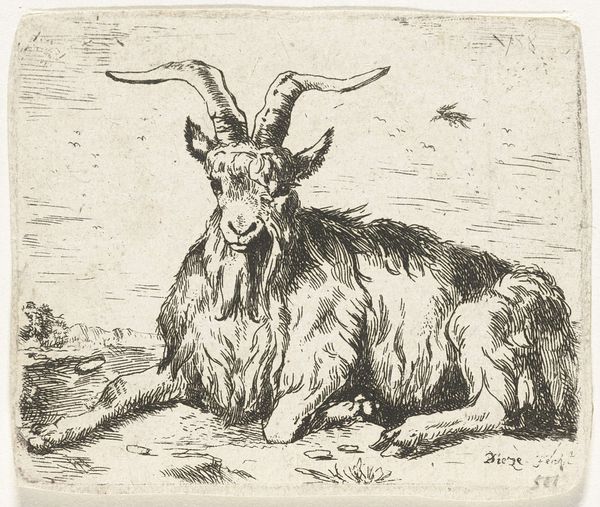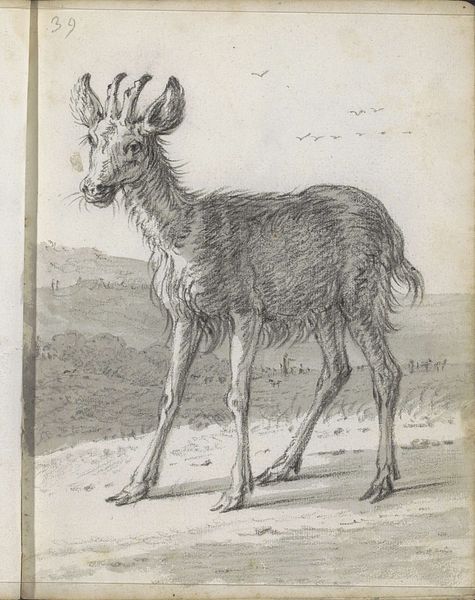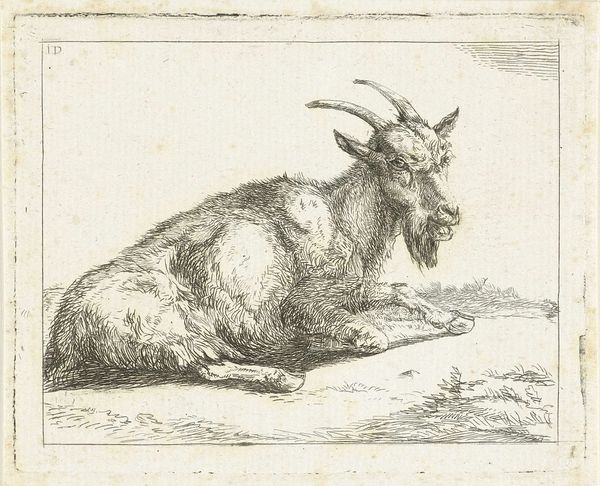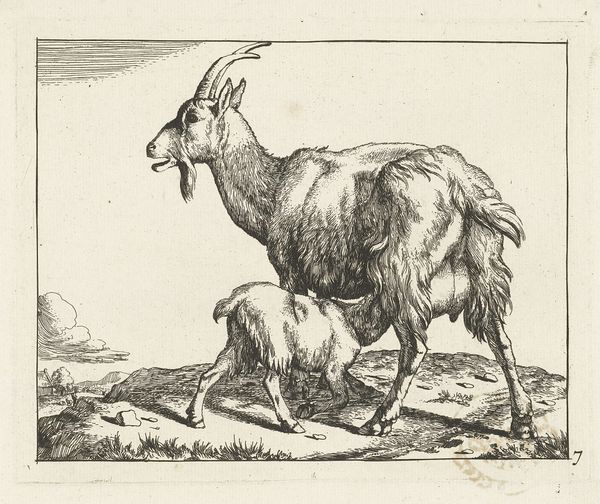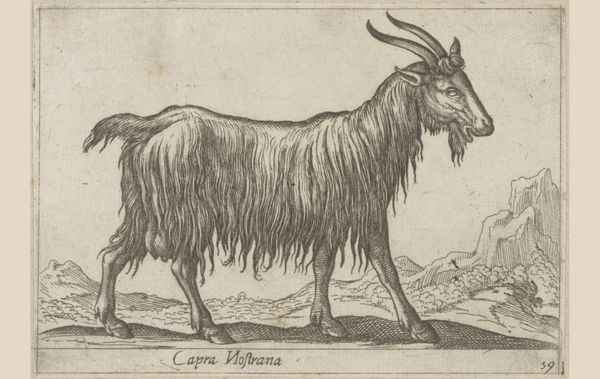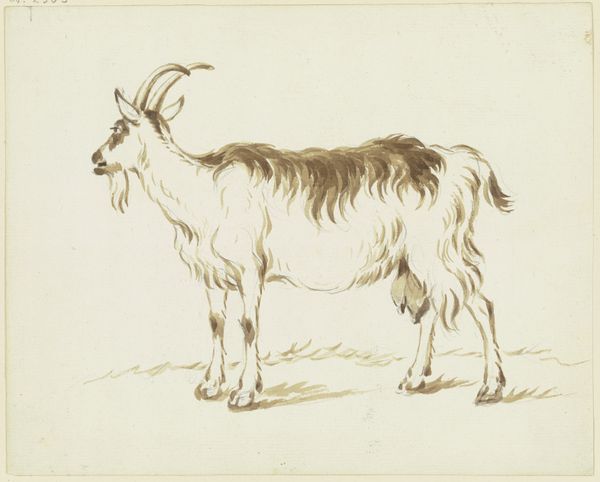
print, etching
#
animal
# print
#
etching
#
landscape
#
figuration
#
realism
Dimensions: height 137 mm, width 112 mm
Copyright: Rijks Museum: Open Domain
Editor: Here we have Jacobus Cornelis Gaal’s "Standing Goat," created in 1851. It's an etching, so a print. I'm struck by the texture achieved through the etching technique. What stands out to you in terms of composition? Curator: Immediately, the contrasting textures command attention. Notice the delicate lines that define the goat’s coarse hair against the relatively smooth expanse of the sky. This interplay creates a visual tension, inviting the eye to linger and discern the subtle gradations. Furthermore, the goat is placed nearly centered, in an area mostly devoid of strong textures to help with creating focus, which helps emphasize its form, almost like a study. Editor: The centered goat, like you said, reminds me a little bit of an anatomical study, so maybe a drawing out of a textbook or something. How does that centering affect how you interpret the landscape in the background? Curator: The subdued landscape serves primarily as a setting, functioning much like a stage. Observe the limited range of tones. The artist’s control over the etching process enabled him to evoke a depth of field, thereby setting off the more complex elements that constitute the animal’s fur. Gaal isn’t after detailed representation. His concentration clearly is the goat's texture. Editor: It's like he's prioritizing the goat's essence, stripping away the background to focus on that form. Thank you for walking me through your observations! Curator: You’ve articulated it well, our focus remains on the art object, examining it through artistic construction. It's been a pleasure to share insights with you.
Comments
No comments
Be the first to comment and join the conversation on the ultimate creative platform.
